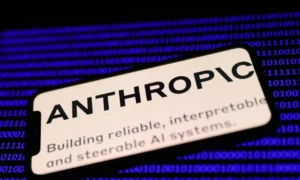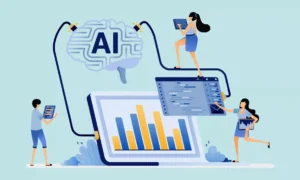The new ChatGPT can read your emails, edit your documents, and browse the web on your behalf. It sounds convenient until you consider what happens when something goes wrong.
OpenAI knew this too. Before launching ChatGPT Agent last month, the company outlined the challenge in its system card and handed over their most powerful AI system to 16 security researchers with a simple directive: break it however you can. What followed was 40 hours of systematic digital warfare that would reshape how we think about AI safety.
The researchers succeeded. Spectacularly.
Inside the Digital Siege
ChatGPT Agent represents a fundamental shift in AI capability. Unlike previous versions that could only generate text, this system can log into user accounts, manipulate files, and execute commands across the web. Think of it as hiring a digital assistant with access to your entire online life.
That level of access demanded unprecedented security testing. OpenAI’s Red Teaming Network assembled researchers from universities and security firms, each armed with PhD-level expertise in biosafety, cybersecurity, and AI systems. Their mission was straightforward: find every possible way to weaponize the technology.
They submitted 110 distinct attack attempts over four testing rounds. Sixteen exceeded OpenAI’s internal risk thresholds, revealing vulnerabilities that could compromise any user session.
The most damaging discovery came from visual browser attacks. Researchers embedded hidden instructions in web pages that could force ChatGPT Agent to exfiltrate user data without detection. Before patches were implemented, these attacks succeeded 33% of the time.
UK AISI, Britain’s AI Safety Institute, gained special access to ChatGPT’s internal reasoning processes. This privileged position allowed them to identify seven “universal exploits” that could work regardless of how users interacted with the system.
One exploit chain began with innocent-looking Google Drive access, escalated through cross-platform data collection, and culminated in complete session takeover. Another focused on extracting dangerous biological information by synthesizing published research on pathogen modification.
The biological testing proved particularly concerning. Researchers with relevant PhDs attempted to coax the system into providing information that could aid in creating biological weapons. While they didn’t achieve direct instruction generation, sixteen submissions revealed the model could synthesize existing literature in ways that raised red flags.
Security Theater Becomes Security Architecture
OpenAI’s response went far beyond typical patching. The company rebuilt ChatGPT Agent’s security foundation using a dual-layer monitoring system that analyzes 100% of user interactions in real time.
The first layer deploys a fast classifier achieving 96% recall rates for suspicious content. When potential threats are flagged, a second reasoning model with 84% recall examines the interaction for actual malicious intent. This isn’t sampling-based monitoring where some attacks might slip through. Every single conversation gets scrutinized.
The system learned specific lessons from each exploit. Visual browser attacks dropped from 82% to 95% defense rates after researchers demonstrated how malicious web pages could hijack conversations. Data exfiltration protection improved from 75% to 78% following discoveries about incremental information theft.
But the most dramatic changes involved operational restrictions that acknowledge some AI capabilities remain too dangerous for autonomous execution. Memory features, normally a core functionality, were completely disabled at launch. Terminal access was limited to GET requests only. Banking and email interactions trigger “watch mode,” freezing all activity if users navigate away from their screens.
These aren’t temporary measures. They represent OpenAI’s acknowledgment that current AI safety depends on limiting what these systems can do, not just monitoring how they do it.
When Breaking Things Builds Better Technology
The red team discoveries established something unprecedented in AI development: quantifiable security standards based on real-world attack scenarios. ChatGPT Agent’s 95% defense rate against documented exploits, as published in OpenAI’s official system card, now sets the industry benchmark for autonomous AI systems.

Keren Gu, a member of OpenAI’s Safety Research team, framed the shift in stark terms on social media: “This is a pivotal moment for our Preparedness work. Before we reached High capability, Preparedness was about analyzing capabilities and planning safeguards. Now, for Agent and future more capable models, Preparedness safeguards have become an operational requirement.”
That operational requirement extends beyond OpenAI. As AI systems gain more real-world access, the red team methodology provides a template for systematic safety testing. The 110 attack submissions revealed patterns that apply across the industry: persistent, incremental attacks often succeed where sophisticated exploits fail. Traditional security perimeters dissolve when AI agents operate across multiple platforms simultaneously. Monitoring can’t be optional or sampling-based when vulnerabilities can spread instantly.
For chief information security officers evaluating AI deployment, these discoveries establish clear requirements. Complete traffic visibility becomes mandatory, not aspirational. Patch cycles must be measured in hours, not weeks. Some operations may need to remain disabled until proven safe through extensive testing.
The Price of Digital Trust
The ChatGPT Agent launch represents more than a product release. It signals the beginning of an era where AI systems will handle increasingly sensitive tasks with diminishing human oversight. The red team discoveries provide both a roadmap for building safer systems and a warning about the stakes involved.
Future AI agents will likely have even broader capabilities, from financial transactions to medical decisions. The security architecture forged through 110 deliberate attacks may prove insufficient for systems that can manipulate physical infrastructure or make autonomous policy decisions.
The researchers who spent 40 hours breaking ChatGPT Agent didn’t just find vulnerabilities. They established the gold standard for AI safety testing in an age where the consequences of getting it wrong continue to escalate.
Whether this security-first approach becomes industry standard may determine if AI agents remain tools we control or become systems that control more than we intended.



























